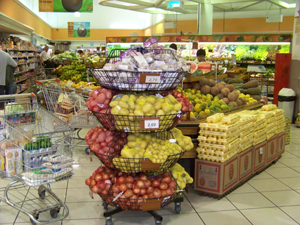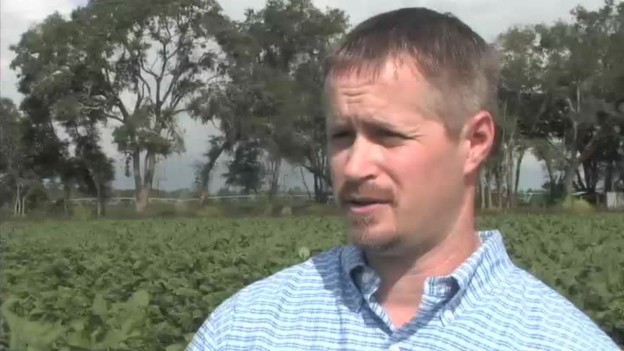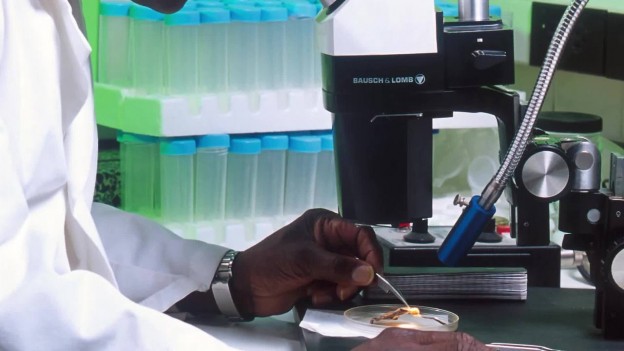Bt field trials produce interesting results for its use in tank mix or rotation with other chemistries. The numbers don’t lie, and the results are dramatic. Marcus Adair is the Senior Field R&D Scientist at Valent BioSciences in Oxford, MS. When he coordinated a series of Bt field trials with cooperators in Florida, California, Texas, and the Carolinas, the objective was to gather hard data on the economic impact of using Bt in tank mix and rotation alongside a variety of other effective chemistries.
Marcus Adair is the Senior Field R&D Scientist at Valent BioSciences in Oxford, MS. When he coordinated a series of Bt field trials with cooperators in Florida, California, Texas, and the Carolinas, the objective was to gather hard data on the economic impact of using Bt in tank mix and rotation alongside a variety of other effective chemistries.
The trials revealed what many progressive growers already know: an integrated program incorporating Bts has definitive and measureable economic impact. Economic impact was expressed as marketable yield and/or seasonal cost of applications. Trials integrated Bt with products such as Coragen, SpinTor, Warrior, Proclaim, and others. Complete information on all trials can be found by clicking here.
Side By Side Comparisons
Here’s a snapshot view of the results from each trial. In each example:
UTC = Untreated Control, Product + Product = Tank Mix combination, Product/Product = Rotation
DiPel and SpinTor – Cabbage
| Product | Foliage Rating (0 = Poor; 6 = Good | Seasonal Cost ($) |
| UTC | 3.25 | |
| SpinTor (4) | 5.65 | 260.88 |
| DiPel + SpinTor (4) | 6 | 224.32 |
| DiPel/SpinTor (2/2) | 5.8 | 177.38 |
Conclusion: Both the Bt rotation and the Bt tank mix programs performed better than SpinTor as a stand alone, and a lower cost.
XenTari and SpinTor – Cabbage
| Product | Marketable Heads/10 Plants | Seasonal Cost ($) |
| UTC | 6.5 | |
| SpinTor (5) | 9.5 | 326.1 |
| XenTari (5) | 9.75 | 166.76 |
| XenTari + SpinTor (5) | 10 | 329.81 |
| XenTari + SpinTor (3/2) | 10 | 230.49 |
Conclusion: The Bt tank mix and rotational programs produced higher yields at equal or lower cost than the SpinTor-alone program.
XenTari and Proclaim – Cabbage
| Product | Damage Rating (1 = No Damage; 6 = Heavy Damage | Seasonal Cost ($) |
| UTC | 5 | |
| XenTari + Proclaim (5) | 0.48 | 396.51 |
| Proclaim (5) | 0.58 | 459.51 |
| XenTari/Proclaim (3/2) | 2.75 | 283.86 |
| XenTari (5) | 3.1 | 166.76 |
Conclusion: Only Bt + Proclaim and Proclaim alone were commercially acceptable. The Bt + Proclaim treatments performed slightly better at a lower cost than Proclaim alone.
XenTari and Coragen – Fresh Market Tomato
| Product | Undamaged Fruit/10 Plants | Seasonal Cost ($) |
| UTC | 160 | |
| Coragen (2x) | 185 | 62 |
| XenTari (2x) Coragen (1x) | 188 | 54 |
Conclusion: Bt in rotation with Coragen works as well as Coragen alone, and at lower cost.
XenTari and Warrior – Cabbage
| Product | Larvae/5 Plants | Seasonal Cost ($) |
| UTC | 290 | |
| Warrior | 267.5 | 99.31 |
| Warrior/XenTari | 201 | 149.71 |
| XenTari/Warrior | 98.5 | 149.71 |
| XenTari | 58 | 200.11 |
| XenTari + Warrior | 32.5 | 299.42 |
Conclusion: Programs that incorporated Bt performed better than the pyrethroid-alone program.





